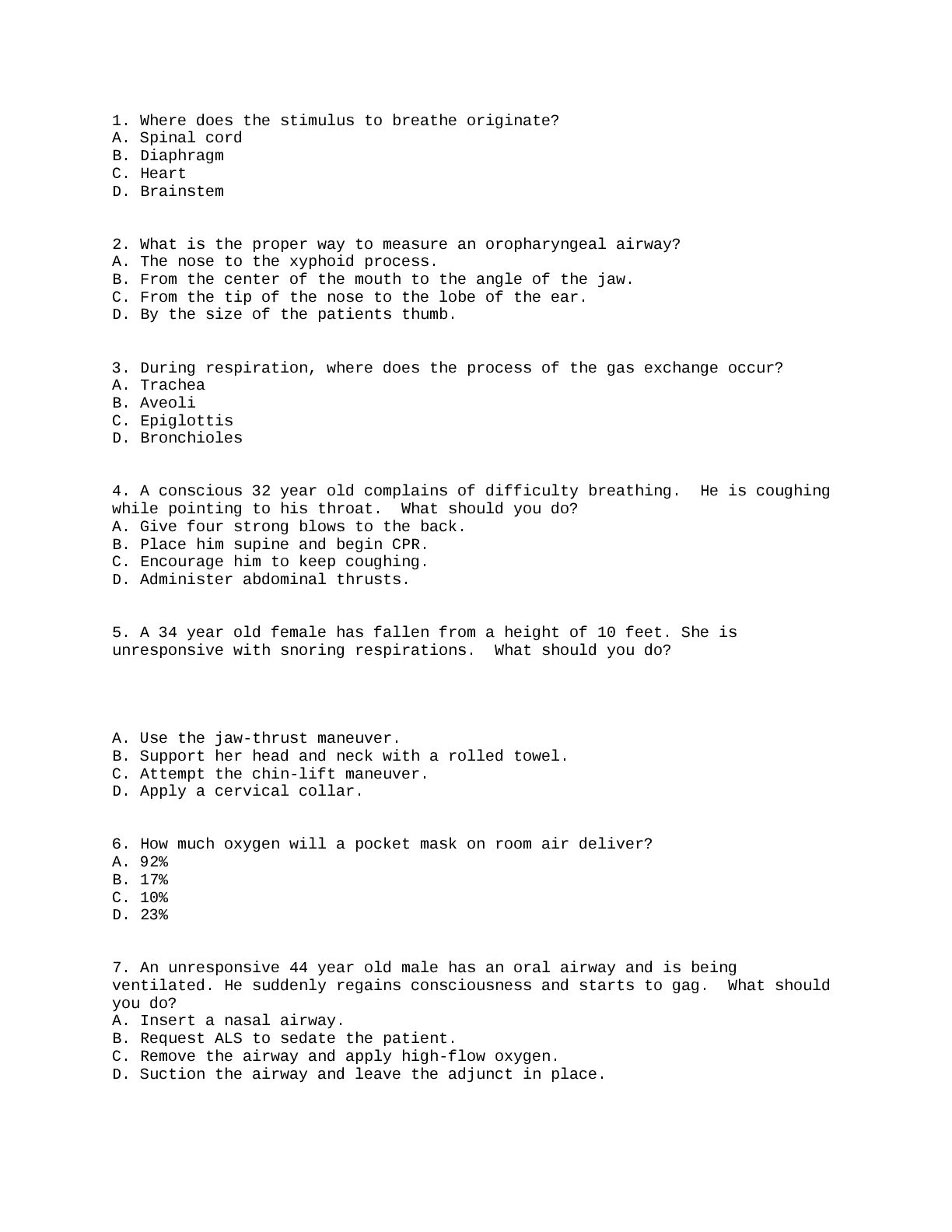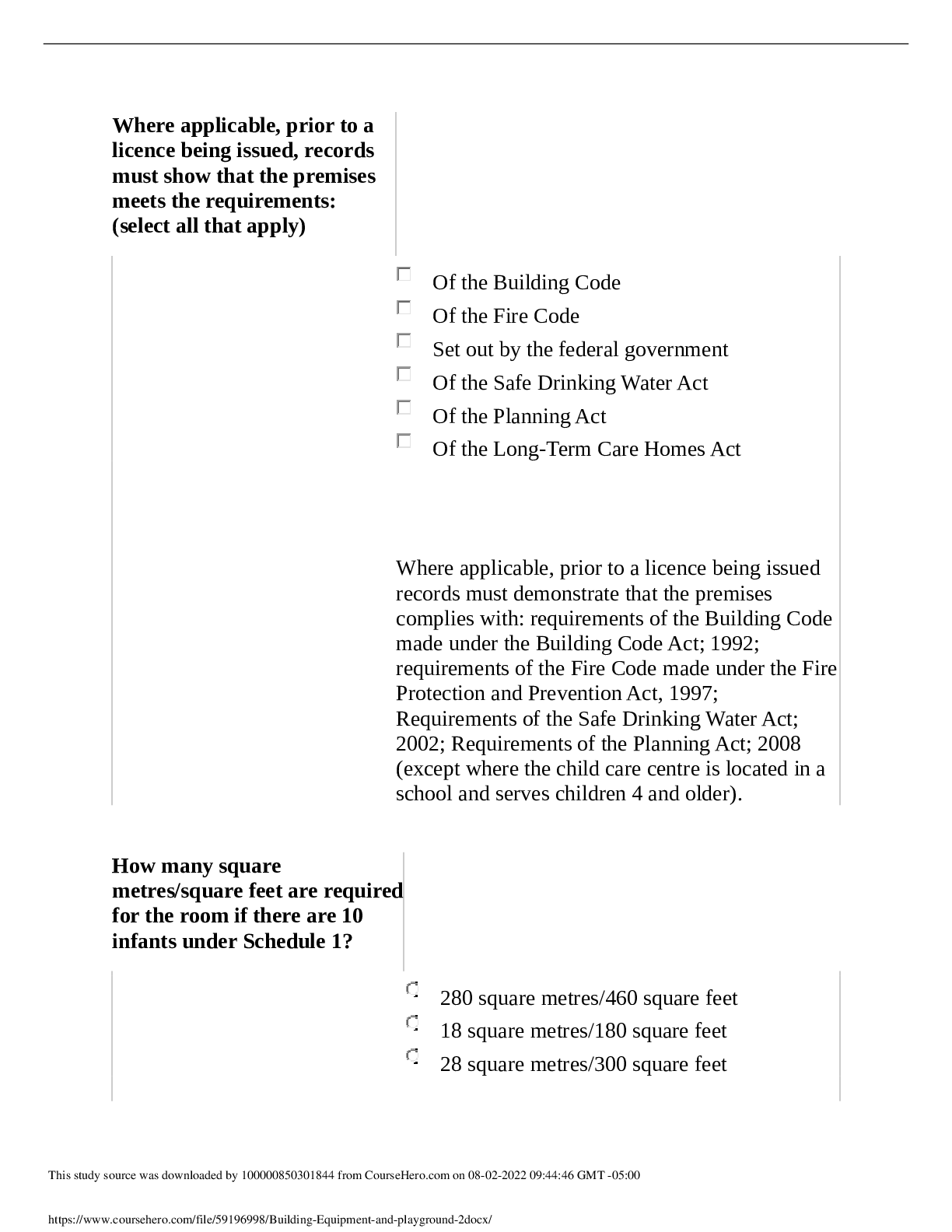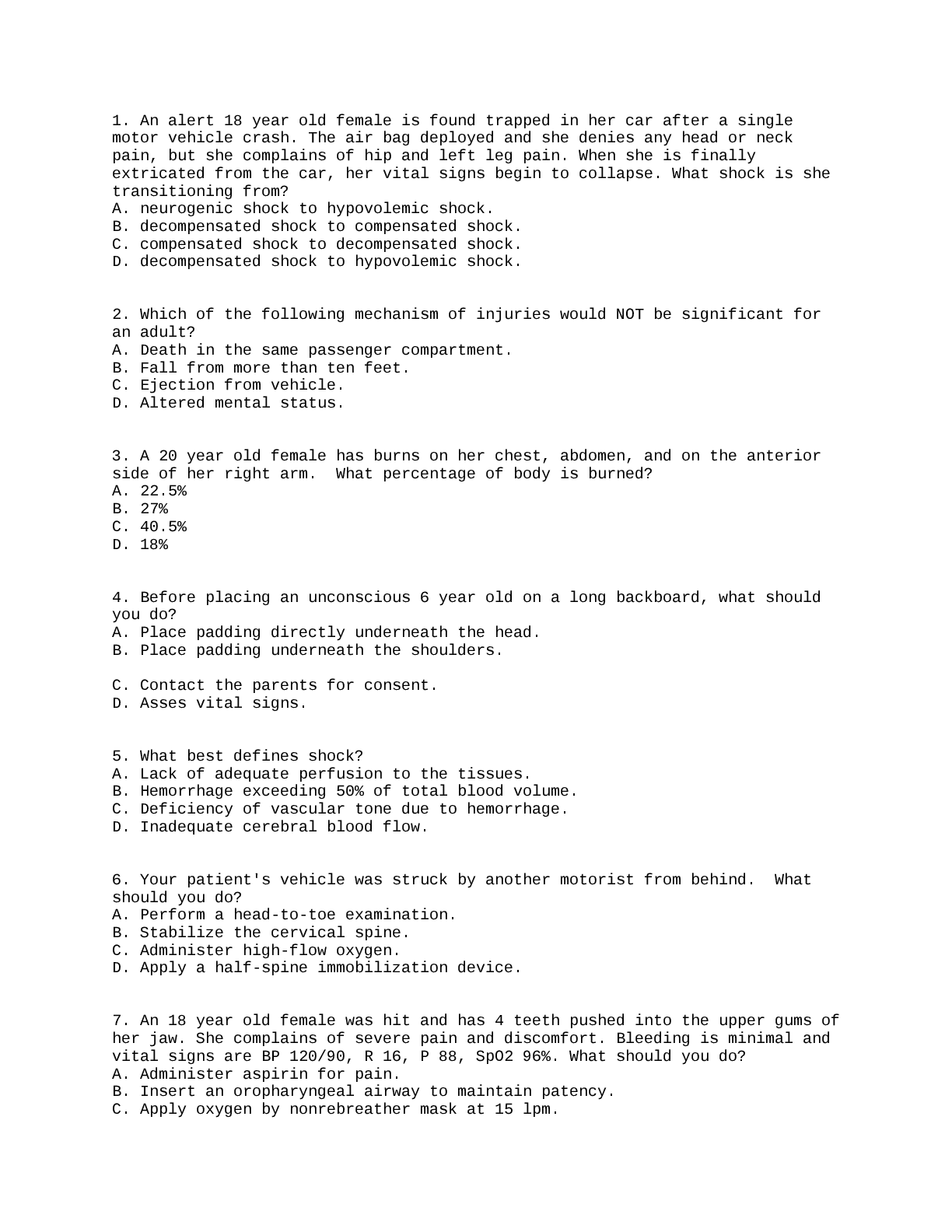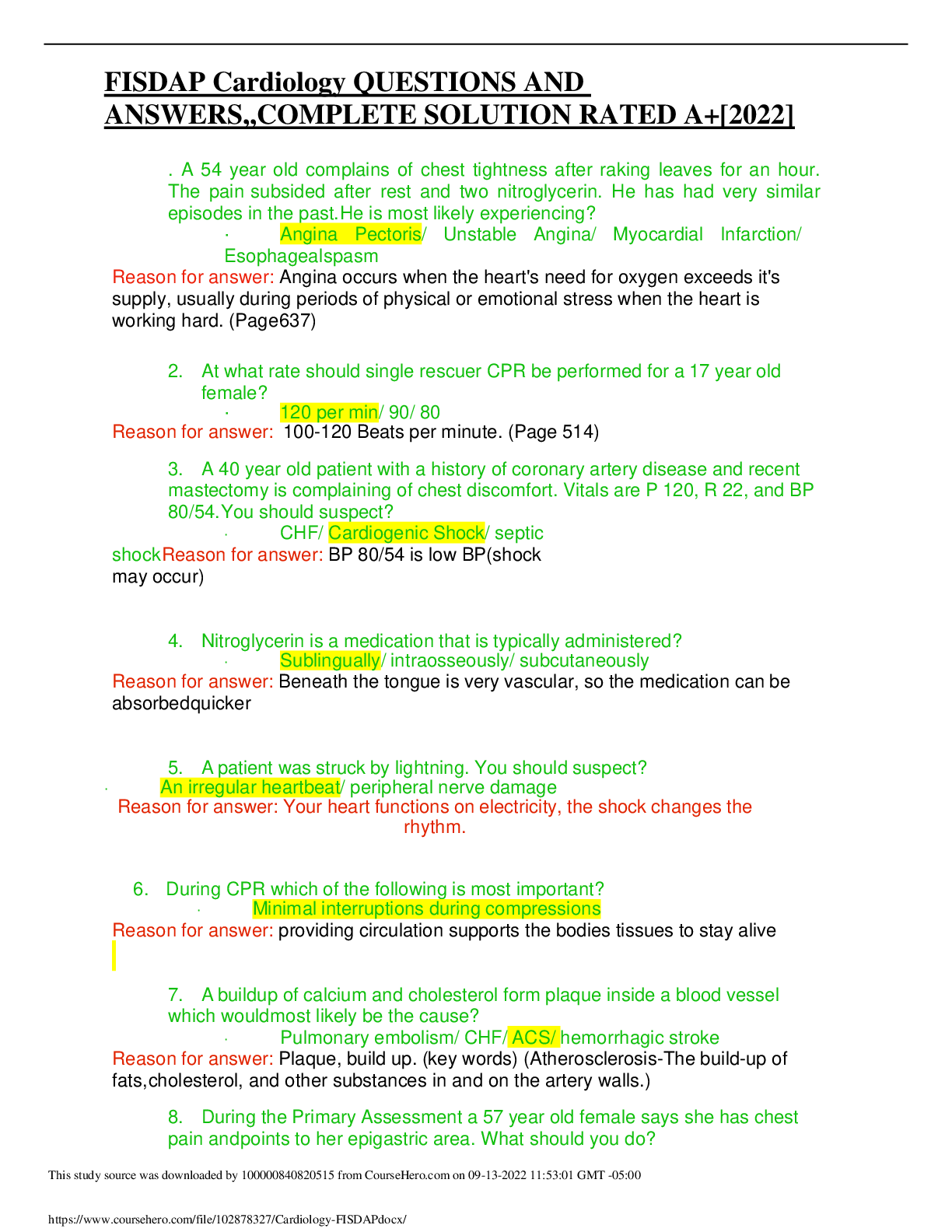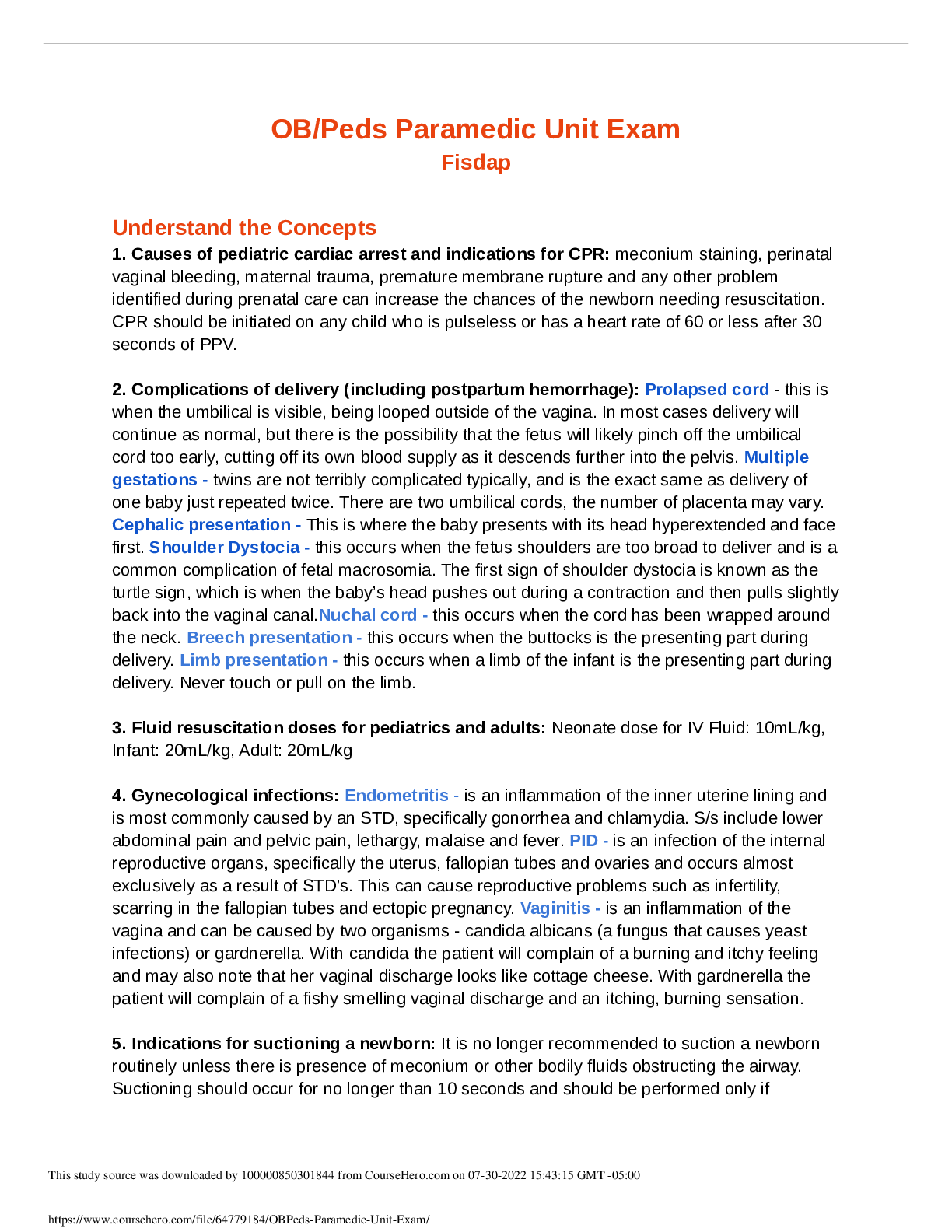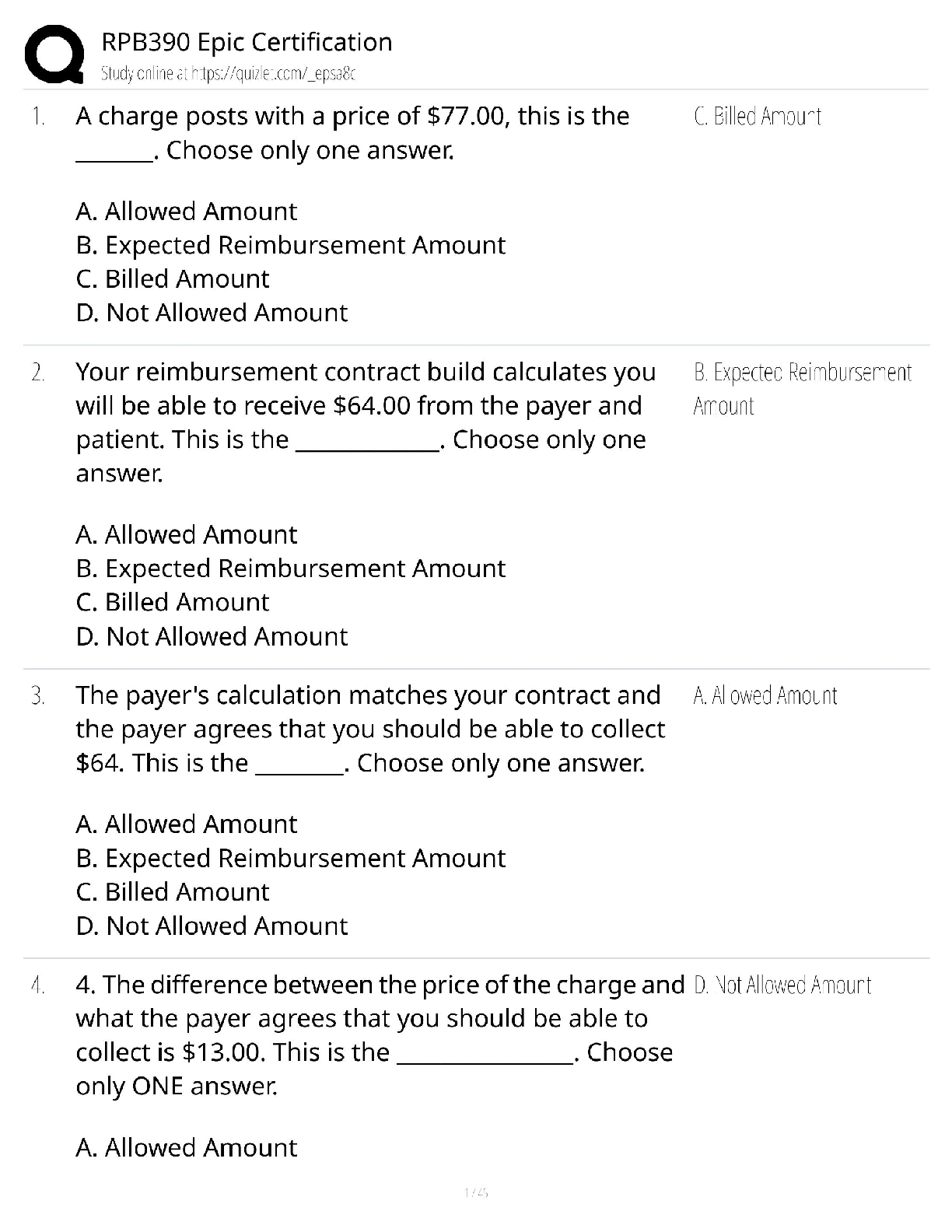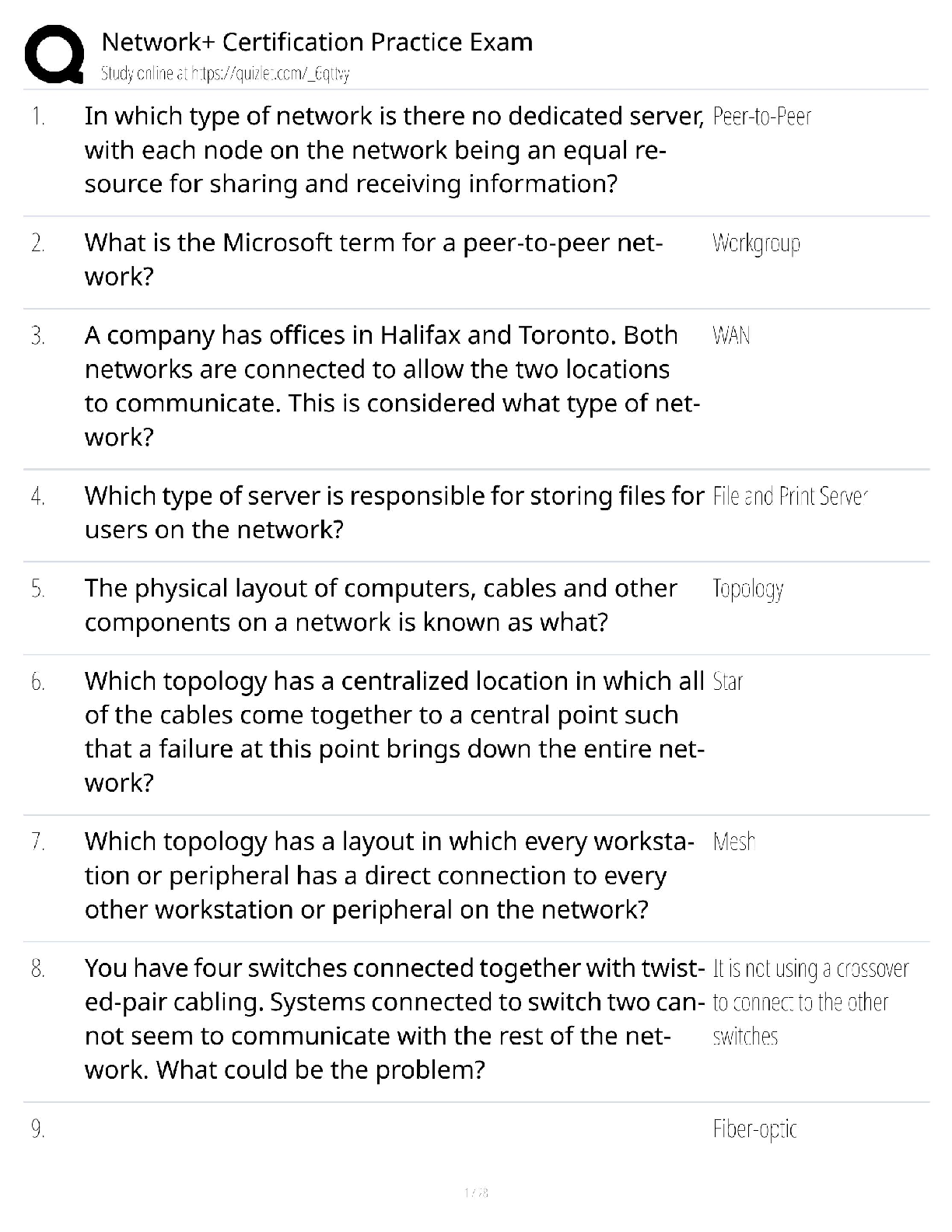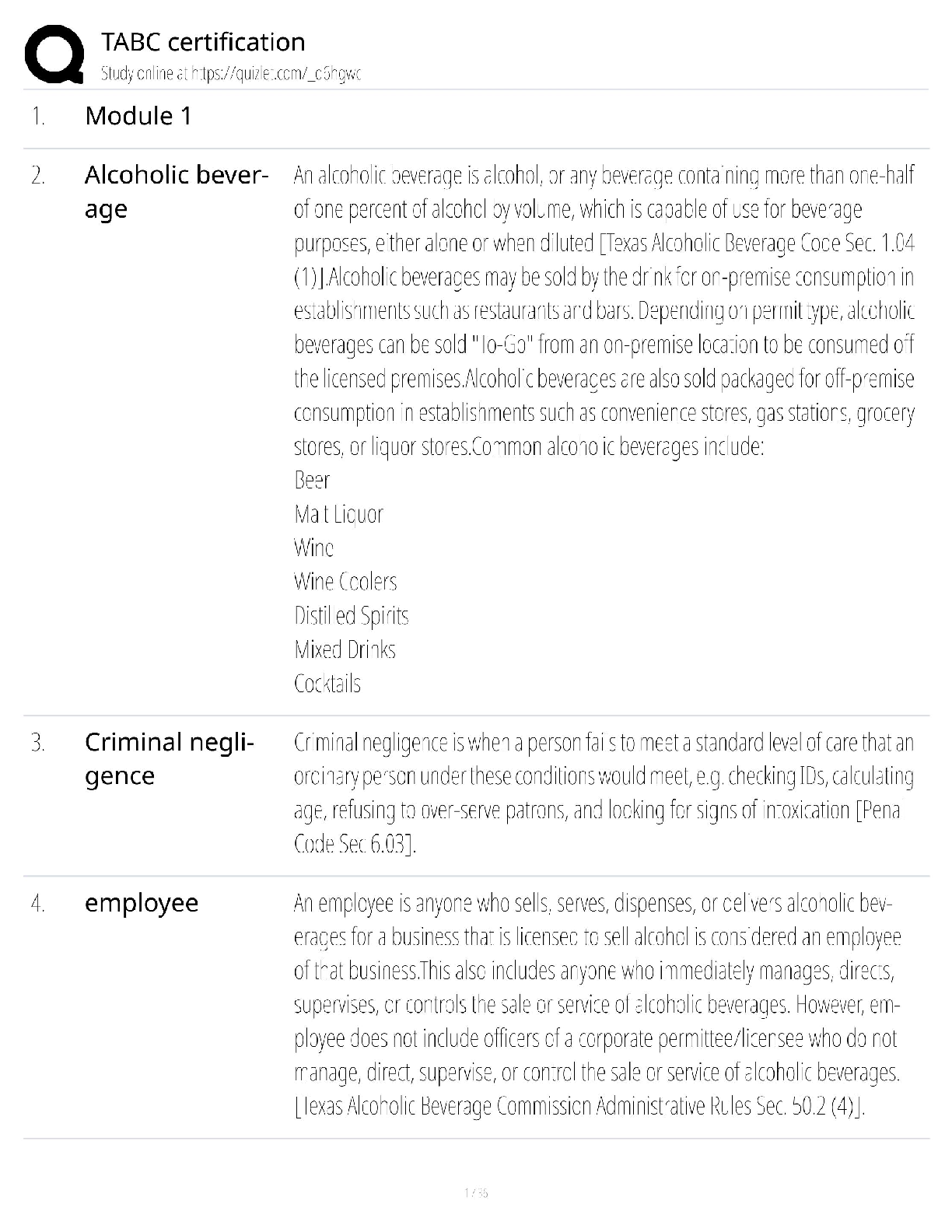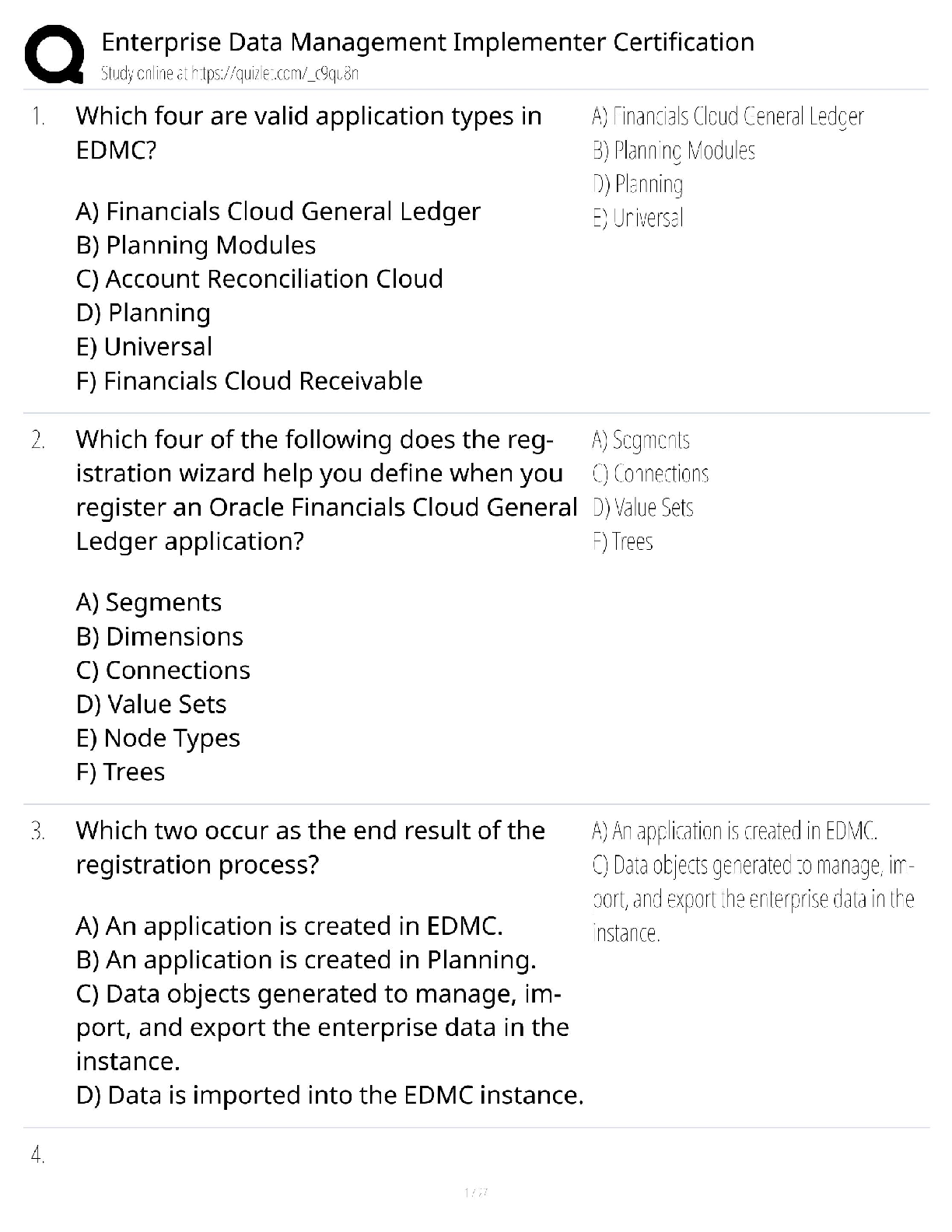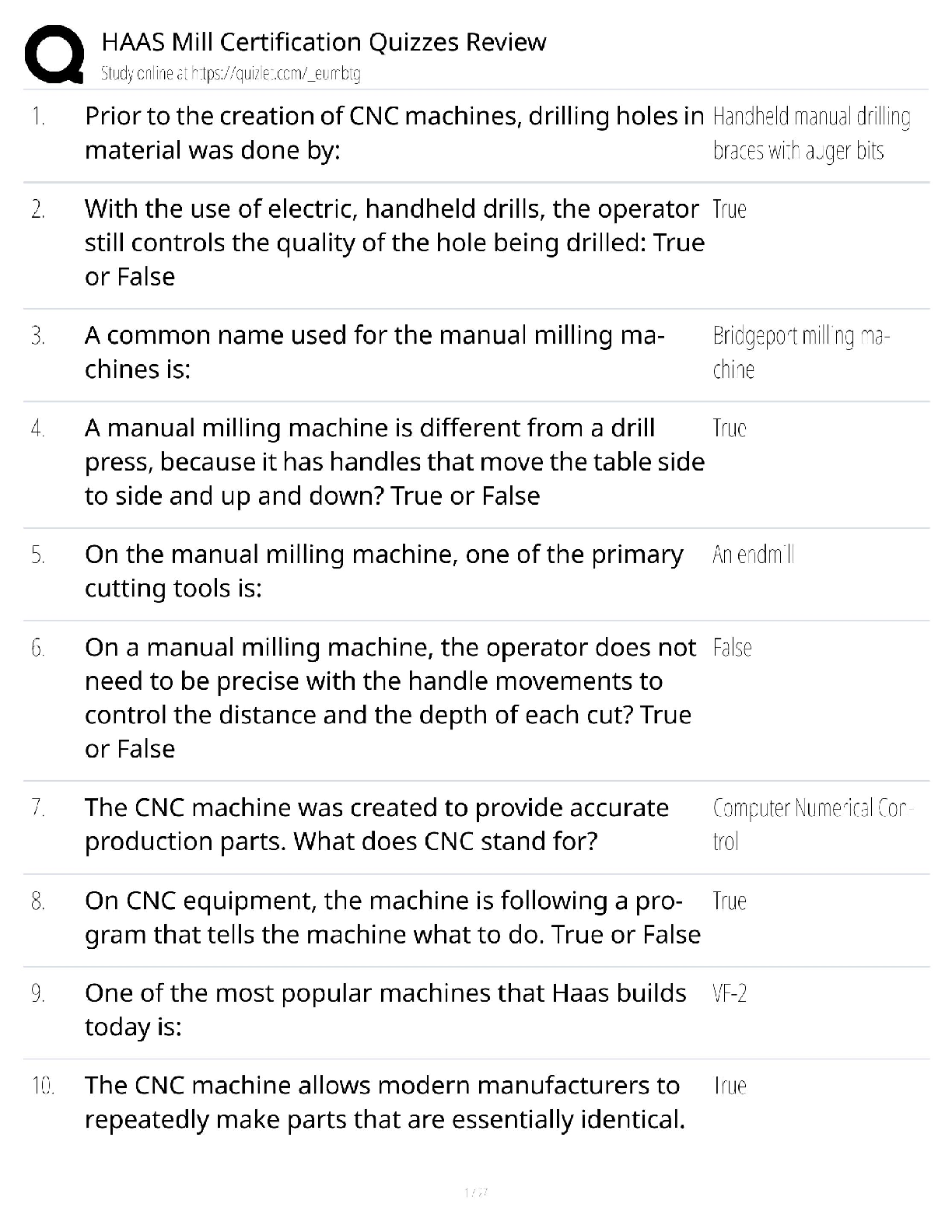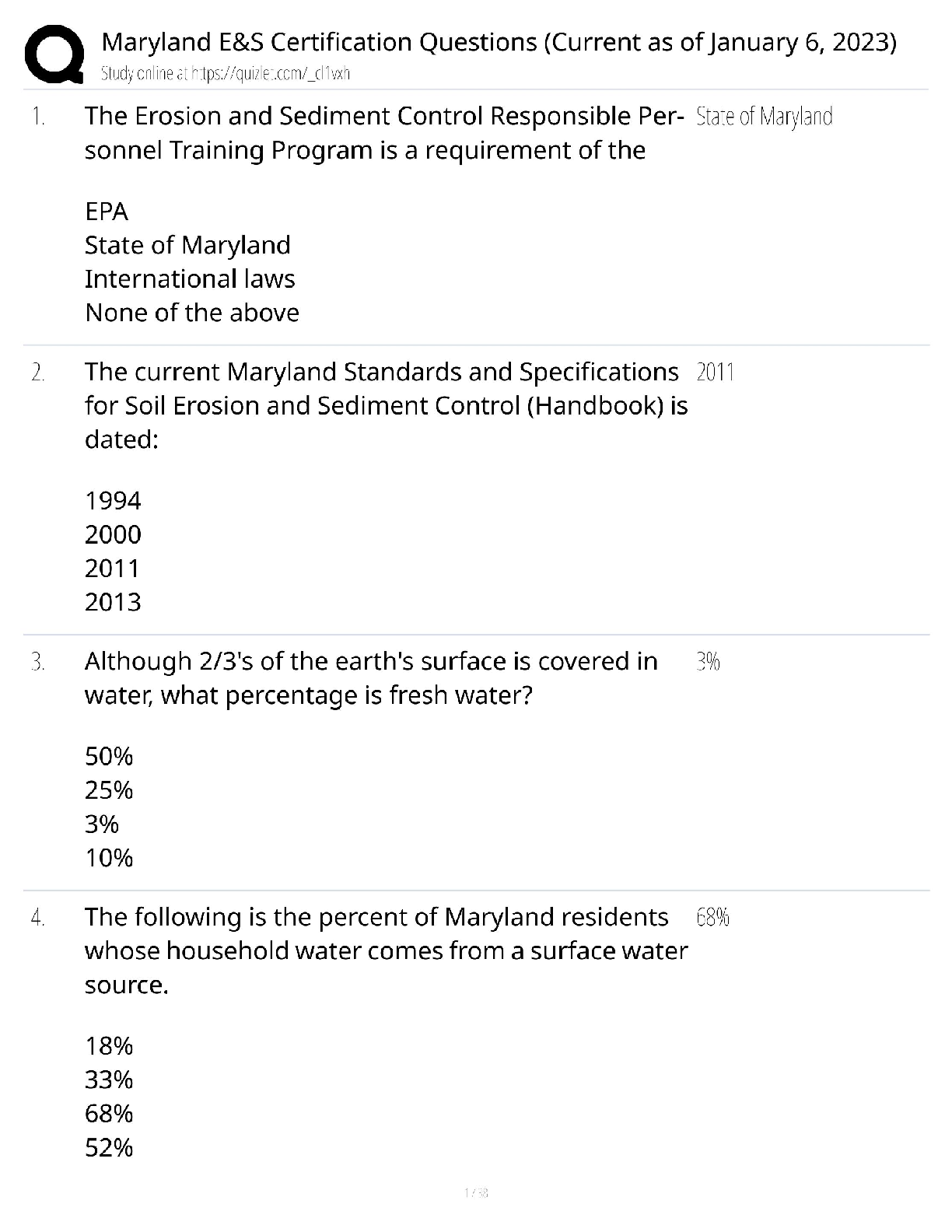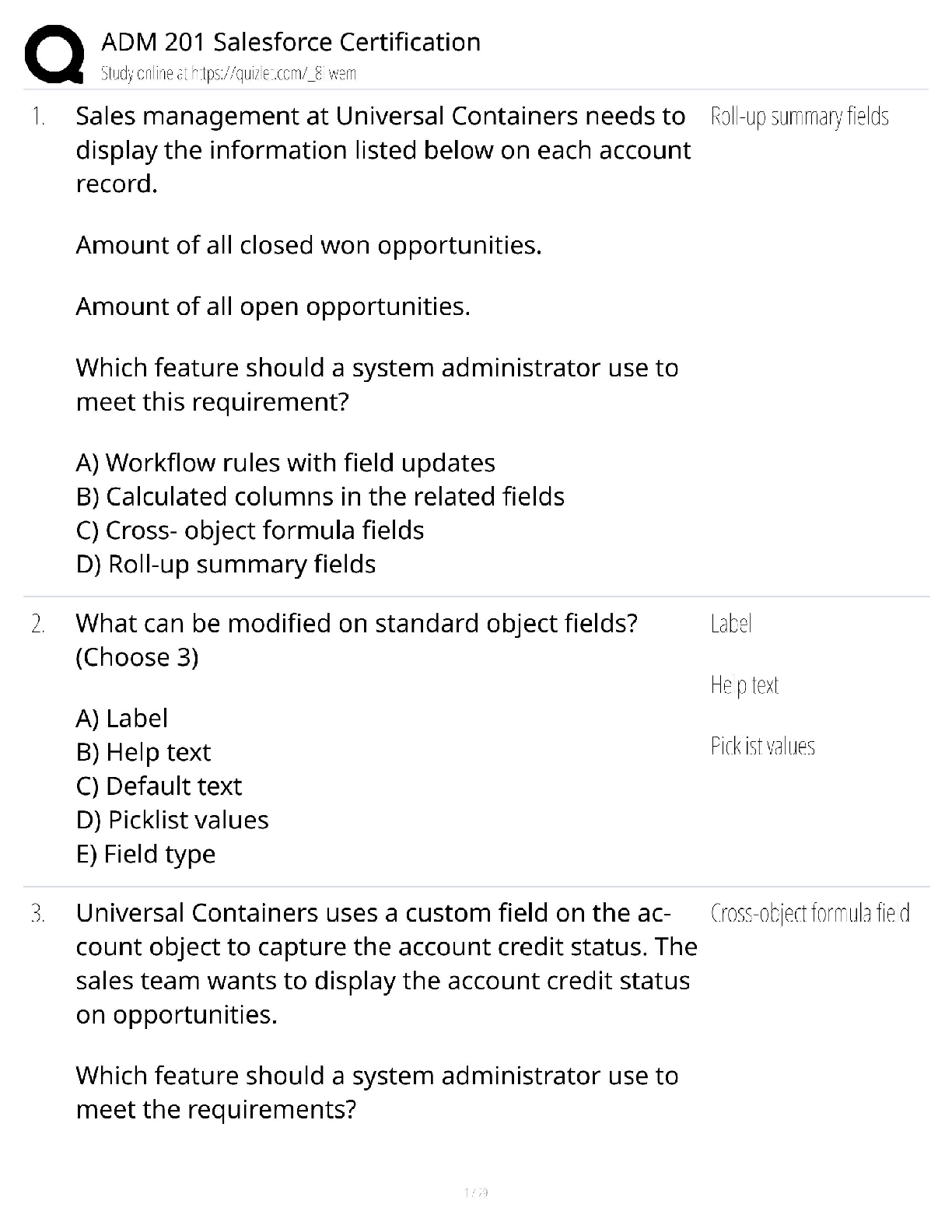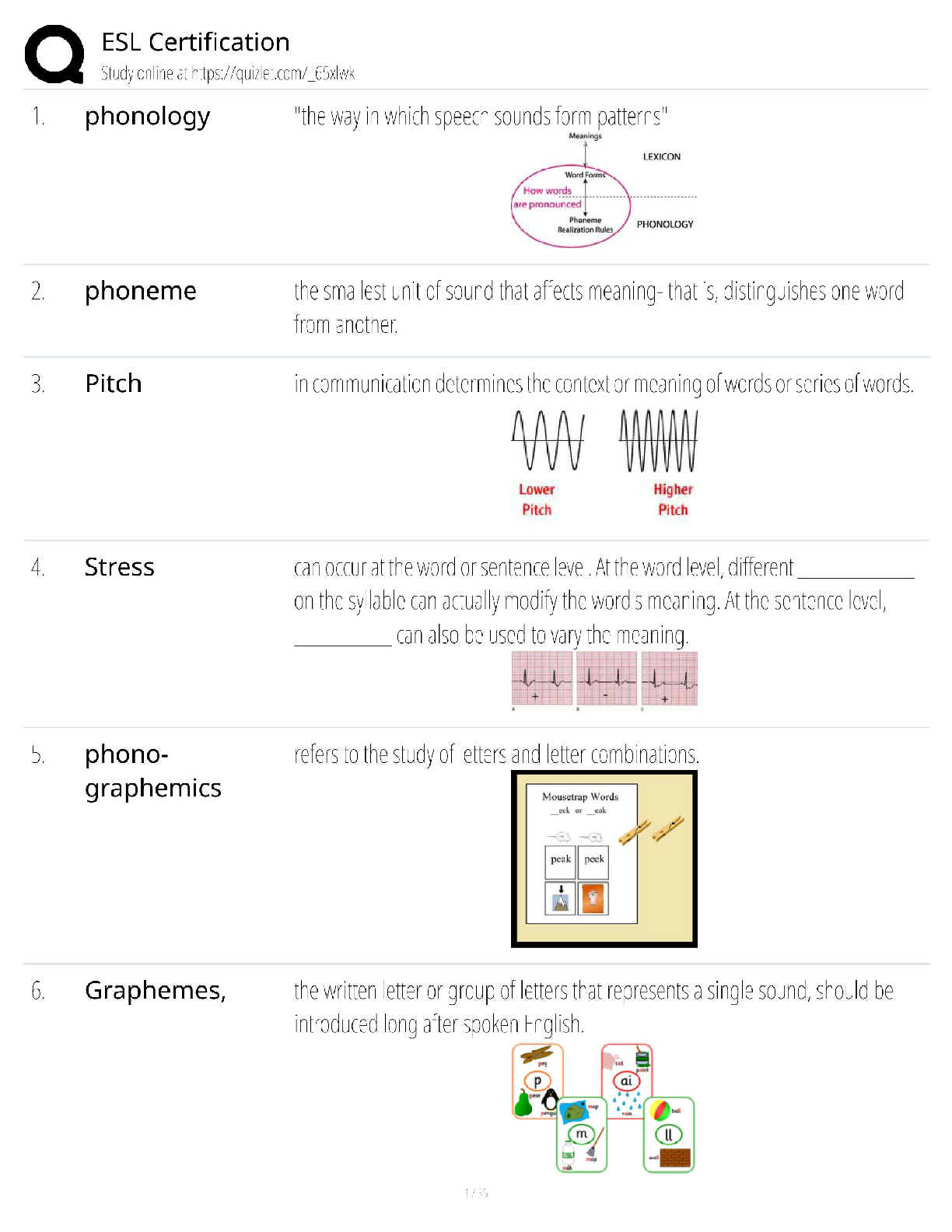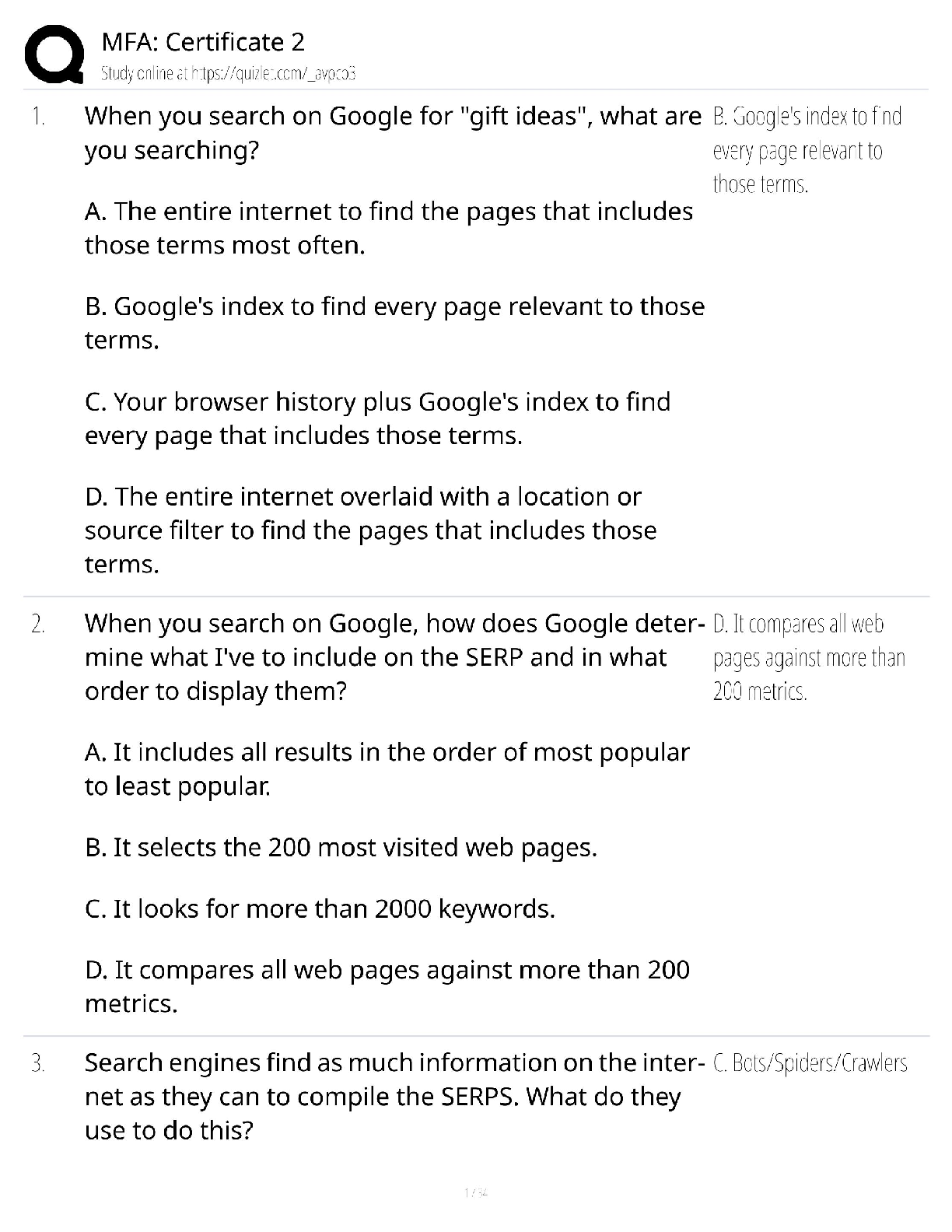*NURSING > QUESTIONS & ANSWERS > NURS6501 Advanced Pathophysiology Midterm & Final Exam Part 1 Updated April 2020 (All)
NURS6501 Advanced Pathophysiology Midterm & Final Exam Part 1 Updated April 2020
Document Content and Description Below
1. A patient has a history of excessive use of magnesium-containing antacids and aluminum-containing antacids. What lab value does the healthcare professional correlate to this behavior? 2. A pers ... on has hypothyroidism. What chemical does the healthcare professional advise the person to include in the diet? 3. In teaching a women's community group, which risk factor does the healthcare professional teach is related to high morbidity of cancer of the colon, uterus, and kidney? 4. A professor has taught the students about the pathogenesis of abdominal pain. Which statement by a student indicates the professor needs to review the material? 5. What effect is a result of inhibiting the parasympathetic nervous system with a drug such as atropine? 6. A student asks why carbon monoxide causes tissue damage. What response by the professor is best? 7. A healthcare professional is caring for a patient who has a delay in electrical activity reaching the ventricle as seen on ECG. What ECG finding would the healthcare professional associate with this problem? 8. Renal failure is the most common cause of which type of hyperparathyroidism? 9. What is one function of the tumor cell marker? 10. A patient is in the hospital has hypernatremia. What condition should the healthcare professional assess for? 11. A patient has portal hypertension-induced splenomegaly. Which lab value would the healthcare professional associate with this condition? 12. Under anaerobic conditions, what process provides energy for the cell? 13. A healthcare professional is educating a patient about asthma. The professional states that good control is necessary due to which pathophysiologic process? 14. A pregnant woman has Graves disease. What test/s does the healthcare professional advise the woman about? 15. Where is two thirds of the body’s water found? 16. A student asks why some vaccinations are given orally and some are given by injection. What response by the professor is best? 17. If a patient develops acidosis, the nurse would expect the oxyhemoglobin dissociation curve to react in which manner? 18. A patient had a thyroidectomy and now reports tingling around the mouth and has a positive Chvostek sign. What laboratory finding would be most helpful to the healthcare professional? 19. A student asks about the mechanism that results in type II hypersensitivity reactions. What description by the professor is best? 20. A patient is having an IgE-mediated hypersensitivity reaction. What action by the healthcare professional is best? 21. A healthcare professional is caring for a patient who has continuous increases in left ventricular filing pressures. What disorder would the professional assess the patient for? 22. Which cAMP-mediated response is related to antidiuretic hormone? [Show More]
Last updated: 3 years ago
Preview 1 out of 11 pages

Buy this document to get the full access instantly
Instant Download Access after purchase
Buy NowInstant download
We Accept:

Reviews( 0 )
$16.00
Can't find what you want? Try our AI powered Search
Document information
Connected school, study & course
About the document
Uploaded On
Apr 02, 2021
Number of pages
11
Written in
All
Additional information
This document has been written for:
Uploaded
Apr 02, 2021
Downloads
0
Views
94

